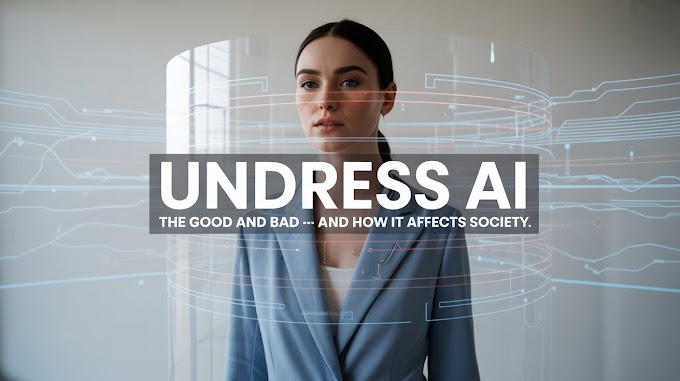Introduction
In recent years, the rise of AI-generated content and tools has brought innovation and controversy alike. One of the most searched yet misunderstood topics is "undress AI websites." These platforms claim to use artificial intelligence to digitally remove clothing from images. The phrase itself draws attention, but what's behind it deserves serious scrutiny. In this post, we explore what undress AI websites are, how they work, the ethical and legal issues involved, and why they matter.
What Are Undress AI Websites?
Undress AI websites are online platforms that claim to use machine learning or neural networks to alter images—specifically, to simulate nudity by digitally removing clothing from photographs. Some market themselves as entertainment or parody tools, while others openly promote more explicit or invasive uses. These sites often use terms like "AI photo editor," "nude generator," or "deep undressing AI," but the core functionality remains the same: modifying visual content in a highly controversial way.
These websites typically use Generative Adversarial Networks (GANs) or similar deep learning models. Here's the basic process:
- Image Input: Users upload a clothed image of a person.
- Data Inference: The AI model, trained on thousands or millions of nude and clothed image pairs, guesses what the subject might look like without clothes
- Image Output: The site generates a synthetic image that appears to show the subject unclothed.
The results vary in quality and realism. Some outputs are clearly fake, while others can be disturbingly realistic.
Are Undress AI Websites Legal?
In many jurisdictions, using or sharing deepfake images—especially those that simulate nudity without consent—is illegal or falls into a legal gray area. Laws are evolving, but many countries now classify such acts as a form of image-based abuse or cyber exploitation. For instance:
- United States: Several states have laws against non-consensual deepfakes.
- United Kingdom: Creating or sharing deepfake porn can be prosecuted under harassment or malicious communications laws.
- EU Countries: The GDPR may apply if personal data is involved.
Before engaging with any undress AI website, users should understand the serious legal implications.
The Ethical Concerns
Beyond legality, the ethics of undress AI websites are highly problematic. Here’s why:
- Consent: These tools often work without the subject's permission.
- Privacy: They violate the personal boundaries of the individuals depicted.
- Reputation Damage: Falsely generated images can ruin lives, especially if they go viral.
- Normalization of Exploitation: These platforms can desensitize users to issues of consent and dignity.
Many AI researchers and ethicists argue that the existence of such tools undermines public trust in digital content and pushes AI technology toward abusive ends.
Why Are People Searching for These Sites?
There are a few reasons behind the growing interest in undress AI websites:
- Curiosity: People are intrigued by the power of AI to alter images.
- Shock Value: Some seek out these tools for the novelty or prank potential.
- Malicious Intent: Others may use them to target individuals or spread fake content.
Regardless of intent, the rising search volume indicates a need for digital literacy, regulation, and awareness.
How to Protect Yourself
As AI tools become more accessible, protecting your online presence is more important than ever. Here are a few steps:
- Limit What You Share: Avoid posting high-resolution personal photos.
- Use Watermarks: Subtle overlays can deter image misuse.
- Report Abuse: If your image is misused, report it to the hosting platform and legal authorities.
- Stay Informed: Keep up with the latest on digital rights and AI ethics.
Positive Uses of AI in Imaging
While undress AI websites represent a dark side of image editing, AI can also be used for good. Examples include:
- Medical Imaging: AI helps in detecting diseases from X-rays and MRIs.
- Restoration: Reviving old, damaged photos with color and detail.
- Accessibility: Enhancing visual content for users with disabilities.
Focusing on ethical applications is key to making AI a force for good.
Conclusion
Undress AI websites raise serious ethical, legal, and social questions. While some might view them as harmless or humorous, their potential for harm is real. As the public becomes more aware of what these tools can do, it's vital to promote responsible AI use and protect individuals from digital exploitation. If you’re searching for "undress AI websites," consider what you're really looking for—and whether it's worth the cost.

.png)


.png)





